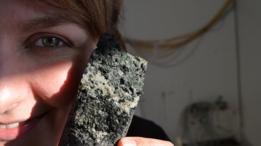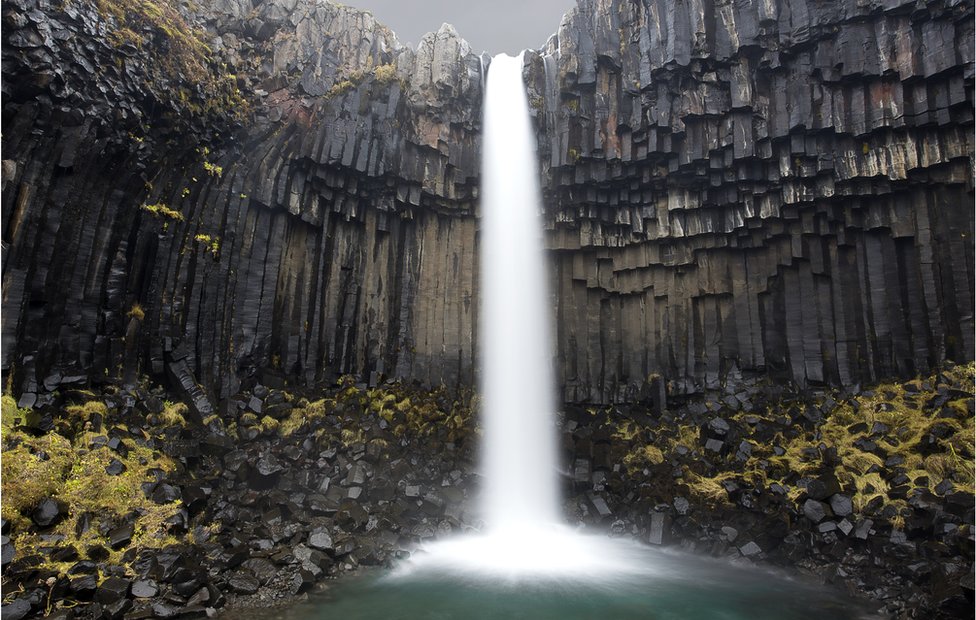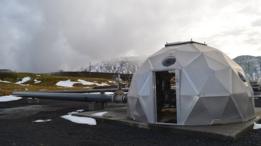
These machines pumping hundreds of tons underground.
is this the smarter way to curb emissions of carbon dioxide? For scientists in Iceland, it is.
The experiment is conducted in the European country involves pumping CO2 with water to underground volcanic rock to create limestone.
The reaction with basalt that is hundreds of meters of the earth’s surface causes carbon dioxide becomes a stable, unmoving and chalky solid.
for researchers, who published their study in the journal Science , the most encouraging thing is the speed at which the process occurs: within months
“. of our 220 tons of CO2 injected, 95% was turned into limestone in less than two years “, explains study author Juerg Matter, University of Southampton, UK.
“it was a big surprise to all scientists who were involved in the project. we thought wow this is really fast,” he tells the BBC.

the reaction in the volcanic rock still produces carbonates (white deposits)
with the increasing concentration of carbon dioxide in the atmosphere and global warming, researchers are each more interested in studying what is known as solutions to the “ carbon capture and storage ” (CCS, for its acronym in English).
in the past it has proven injecting pure CO2 in sandstone aquifers or deep salty
The places that have chosen to make these tests include oil or gas into disuse.; sites impermeable rocks that keeps carbon dioxide underground.
But has always feared that, over time, carbon dioxide find an escape and return to the atmosphere.

samples were taken for check the progress of the experiment.
While Carbfix Iceland project does is solidify carbon is not desired, once underground, not escaping.
Working with geothermal power plant Hellisheidi, on the outskirts of Reykjavik, experts combined waste CO2 with water to create a liquid a little more acid then was sent to hundreds of meters underground in volcanic basalt which comprises most of the North Atlantic island.
the low pH of the water ( 3.2) was used to dissolve the calcium and magnesium ions in the basalt, which reacted with carbon dioxide to calcium and magnesium carbonates.
to check if the experiment was working, samples were taken subsoil where the CO2 is pumped.
the result was white spots of carbonates in the pores of the stone that was sampled, indicating that carbon dioxide had solidified .
the researchers also labeled CO2 with carbon-14, a radioactive form of the element.
in this way they could know whether the injected carbon dioxide was seeping back to the surface, and so far has not detected a leak.
“This means that can pump large amounts of CO2 and store it in a safe way in a short period of time “said study co-author Martin Stute, the Lamont-Doherty Earth Observatory of Columbia University in the United States.
” in the future we can think about using this for power plants where there is a high concentration of basalt, and there are many places like that. “
Meanwhile, Dr. Matter noted that all continents can be found basalt” and certainly off the coast because all oceanic crust beneath the ocean floor is basalt rock. “
” in terms of availability of rocks basalt for dealing with global CO2 emissions, no problem, “
<. div class = "bbc-image" itemscope = "itemscope" itemtype = "http://schema.org/ImageObject" readability = "8"> 
Iceland has basalt rocks in abundance, something that does not happen everywhere.

No comments:
Post a Comment